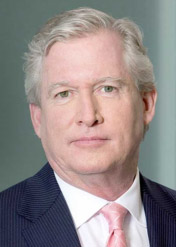Southern California Edison has a plan—and it just might build momentum to solve the nation’s spent nuclear fuel disposal dilemma.
Imagine it’s January 1998. A specially equipped train from the Department of Energy rolls up to the San Onofre Nuclear Generating Station (SONGS) to pick up spent nuclear fuel and take it to the Yucca Mountain repository in Nevada. This scene is repeated thousands of times at nuclear plant sites across the U.S. over the ensuing decades. The solution to permanent spent fuel disposal as outlined in the Nuclear Waste Policy Act (and its amendments) is working as intended. The nation’s commercial spent fuel is safely isolated deep underground for the long term.
But that is not what happened. Work on Yucca Mountain has been stalled for a full decade, and the organization within the DOE that by law is responsible for managing the spent fuel program has been defunded and disbanded.
The Barakah nuclear power plant. Unit 3 is the second from left. (Photo: Emirates Nuclear Energy Corporation)
The construction of Unit 3 at the United Arab Emirates’ Barakah nuclear power plant has been completed, the Emirates Nuclear Energy Corporation (ENEC) announced yesterday on the sidelines of COP26, the high-profile climate confab taking place in Scotland this week and next.
According to ENEC’s announcement, Barakah-3 will now undergo operational readiness activities and is on track to start up in 2023.
From left, Shannon Bragg-Sitton, Paul Chodak, and Michael J. Guastella appear before the Senate Committee on Energy and Natural Resources on November 4.
As Congress awaited key votes yesterday on spending bills that include production tax credits for at-risk plants and a new amendment adding $500 million in supplemental funding over five years to increase the availability of high-assay low-enriched uranium (HALEU), the U.S. Senate Energy and Natural Resources Committee held a Full Committee Hearing On Potential Non-Electric Applications Of Civilian Nuclear Energy. Sen. Joe Manchin (D., W.V.), chairman of the committee, emphasized that “advanced nuclear reactors hold enormous potential to provide opportunity to communities across the country with zero-emission baseload power” and made it clear he expects new reactors to replace retiring coal plants in his home state of West Virginia.
Speaking before the committee were Shannon Bragg-Sitton of Idaho National Laboratory, Paul Chodak III of American Electric Power, and Michael J. Guastella of the Council of Radionuclides and Radiopharmaceuticals.
Artist rendering of a NuScale SMR plant.
On the sidelines of the COP26 Conference in Glasgow yesterday, John Kerry, the Biden’s administration’s special presidential envoy for climate, joined Romanian president Klaus Iohannis to announce plans to build a first-of-a-kind small modular reactor plant in Romania. The SMR technology is to be provided by NuScale Power, based in Portland, Ore.
LLNL and Penn State researchers developed a new approach to study and purify medical isotopes, including actinium. (Image: Thomas Reason/LLNL)
Scientists at Lawrence Livermore National Laboratory and Pennsylvania State University have demonstrated that a natural protein found bonded to rare earth elements can be recovered and used as a tool to purify and effectively manage radioactive metals that show promise for cancer therapy and the detection of illicit nuclear activities.
Vogtle-4 containment as it appeared last month. Photo: Georgia Power
In what has become for nuclear advocates an all-too-familiar refrain, Georgia Power has made another revision to the Vogtle nuclear expansion project schedule. The company now predicts a Unit 3 in-service date in the third quarter of 2022 and a Unit 4 in-service date in the second quarter of 2023, representing a three-month shift for each unit.
An F-35A Lightning II takes off from Eielson Air Force Base in Alaska on July 1, 2021. (Photo: U.S. Air Force/Airman 1st Class Jose Miguel T. Tamondong)
The Department of the Air Force has selected Eielson Air Force Base as the site of a stationary microreactor that “will provide the installation with a clean, reliable, and resilient nuclear energy supply technology for critical national security infrastructure,” the department announced on October 15.

















 “The price of anti-nuclear psychosis (for that is what it is) will be paid by vulnerable countries and future generations who suffer the escalating damages of climate breakdown,” writes environmentalist and author Mark Lynas in the foreword to a new study,
“The price of anti-nuclear psychosis (for that is what it is) will be paid by vulnerable countries and future generations who suffer the escalating damages of climate breakdown,” writes environmentalist and author Mark Lynas in the foreword to a new study, 



